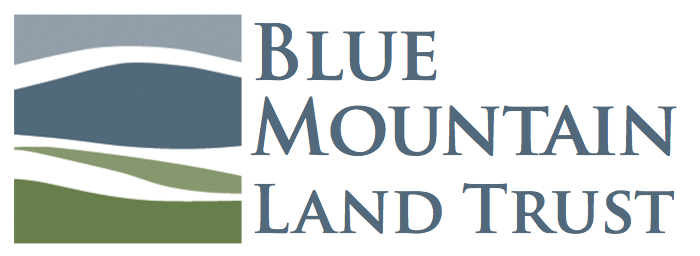By Jason Bulay, Conservation Director, & Amanda Martino, John Day Conservation Manager
Our nation’s farms and ranches – and the people who live and work on them – are at risk. The average farmer or rancher is over sixty years old, and almost two-thirds of all agricultural land will change hands in the next twenty years.
At the same time, a growing population and increased demand for development land have caused an explosion in land prices, creating hurdles for beginning farmers and ranchers and making it harder for retiring farmers to pass their land to the next generation.
This nationwide trend is reflected throughout eastern Oregon and Washington. In only five years, from 2007 to 2012, 440,000 acres – 6% of all the agricultural land in the area – were removed from production in the 11 counties that comprise BMLT’s service area.
The Blue Mountain Land Trust, like many land trusts across the country, is committed to fighting this loss of farmland by working with farmers and ranchers to help them secure the future of their land. This is a cornerstone of our mission – agricultural land provides critical habitat for a wide range of fish, birds, and wildlife, and these working lands are essential to our local economy and way of life. BMLT has preserved almost 4,000 acres in Oregon and Washington since its founding in 1999, and over 3,500 of those acres are working farms and ranches.
Land trusts like BMLT can use many tools to protect farmland. One tool is a type of conservation easement called a working land easement. A conservation easement is a voluntary, permanent agreement between a landowner and a land trust about how the land will be used. Most often, this will extinguish most development rights, preventing large-scale development and allowing agricultural use to continue. An easement can also be used to protect natural or restored habitat areas on a property by ensuring sound management of these areas. However, the landowner keeps ownership of the land and all rights not specifically affected by the easement – the land can still be farmed, sold, mortgaged, or inherited.
Many conservation easements are donated to BMLT by the landowner. If the easement is donated, there can be substantial tax benefits. In some cases, BMLT is able to use state or federal grant programs to purchase the easement, providing a lump sum payment to the landowner in exchange for their agreement to prevent development. Regardless of whether an easement is donated or purchased, it can be an important estate planning tool, by reducing estate taxes and keeping the land in family ownership.
Some farmers and ranchers, particularly those with no children to take over operation of the land, find that the best way to secure their land’s future is to donate it to a land trust outright, either in their will or during their life with a reserved right of lifetime use. Because of BMLT’s mission to preserve farmland, we are in an ideal position to accept these gifts and can promise they will always be managed as agricultural land.
For more information about protecting working farms and ranches, please visit www.bmlt.org or contact Jason Bulay, Conservation Director at Jason@bmlt.org or Amanda “Marti” Martino, John Day Basin Conservation Manager at marti@bmlt.org.

